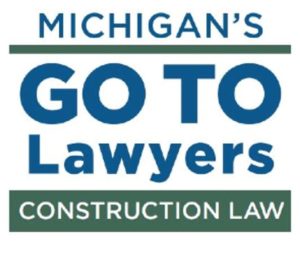In response to the economic impact of COVID-19 on American businesses, Congress passed the “Coronavirus Aid, Relief, and Economic Security Act” (“CARES Act”).
This $2 Trillion stimulus package is designed to offset the significant disruption businesses are facing as the country battles COVID-19.
The following is a brief guide to the Small Business Administration components of the CARES Act, including the Keeping Workers Paid and Employed Act. These provisions provide for over $300 Billion in forgivable business interruption loans administered by the Small Business Administration (“SBA”), as well as $10 Billion in emergency grants.
Who is Eligible?
Any business with fewer than 500 employees, or any other business defined as a “small business” by the Small Business Act qualifies for the business interruption loans. Notably, sole proprietors, independent contractors, and other self-employed individuals also qualify.
How Much may a Business Borrow?
A business may borrow up to $10 Million or 2.5 the business’s average monthly payroll cost for the preceding year, whichever is lower.
Are There Exclusions?
In general, there are very few exclusions to the costs used to tabulate the amount of the loan. They include:
- Any salary for which a business is seeking a loan may not exceed $100,000 annually (pro rated for the period covered by the loan).
- Any loans or grants made under previous COVID-19 relief packages, such as Economic Injury Disaster Loan, will be counted against the maximum a business is permitted to borrow and rolled into the larger loan.
- Borrowers may not prepay the principal on mortgage obligations.
WHAT CRITERIA ARE USED TO DETERMINE IF MY BUSINESS QUALIFIES?
Congress directed the SBA and SBA lenders to substantially diminish their typical lending practices for the relief provided in this legislation. The two criteria required to be used are (1) whether the borrower was in business on February 15, 2020; and (2) whether the borrower had payroll expenses (salaries and taxes) for employees or independent contractors.
Borrowers are to make a good faith certification that the “uncertainty of current economic conditions” makes the loan necessary to support the business’s ongoing operations and that the loan proceeds will be used to retain workers or continue to make the mortgage, lease, and utility payments.
Congress specifically directed the SBA to waive a number of criteria that generally apply to SBA loans, including personal guarantees; collateral; and that the borrower is not able to obtain credit elsewhere.
HOW DOES THE LOAN FORGIVENESS WORK?
A borrower may receive forgiveness of the sum of all:
- Payroll costs (salary, commission, benefits, etc.)
- Interest paid on a mortgage
- Rent payment
- Utility payment
incurred during the eight week period immediately after the origination of the loan.
This amount may be reduced if the business’s workforce is reduced based on the prior year’s workforce, or if a salary is reduced by more than 25% of the same salary in the quarter prior to the loan being originated.
If a business has laid off employees due to COVID-19, it can still receive forgiveness under the CARES Act if it rehires employees for those positions (though they need not be the same employees; the forgiveness amount is based on the number of full-time equivalent employees and the total payroll, not the actual employees).
Congress is requiring the following documentation to accompany an application for forgiveness:
- Payroll tax filings
- State income, payroll, and unemployment insurance filings
- Payment receipts and/or canceled checks for rent, lease, mortgage, and utility payments.
Amounts that are forgiven are not to be included in the determination applicable gross income.
The loan forgiveness section must take effect within 30 days of the CARES Act’s enactment.
IF A LOAN ISN’T FORGIVEN, WHAT ARE THE REPAYMENT TERMS?
Portions of a loan that are not forgiven are to be repaid over a period of 10 years. The preliminary interest rate is not to exceed 4% (until June 30, 2020). There are no prepayment penalties.
Loan payments for Section 7(a) loans may be deferred by a borrower for at least 6 months but no longer than 1 year.
HOW MUCH ARE THE LOAN FEES?
Congress directed the SBA to collect no fees from borrowers and to pay any fee to a lender that the lender would charge a borrower.
WHAT IF A BORROWER ALREADY HAS AN EIDL?
A borrower will not be able to receive a Section 7(a) loan under the CARES Act and an Economic Injury Disaster Loan (“EIDL”) for the same purpose. However, the CARES Act allows for a borrower that has obtained an EIDL unrelated to COVID-19 to apply for a loan under the CARES Act, with an option to refinance the EIDL loan into the CARES Act loan. Any emergency EIDL grant award would then be subtracted from the amount forgiven under the CARES Act.
WHAT ARE THE EIDL GRANTS?
The CARES Act will appropriate $10 Billion so that eligible entities which have already applied for an EIDL may request an advance on the loan which will be made in the form of a grant. Advances are capped at $10,000 each, and the SBA must distribute an advance within 3 days of a request. An applicant that receives this advance would not be required to repay it, even if the applicant is denied an EIDL. However, before disbursing this advance, the SBA must verify that an entity is an eligible applicant for an EIDL. This approval will take the form of a certification under penalty of perjury by the applicant.
HOW LONG WILL EIDL GRANTS BE OFFERED UNDER THE CARES ACT?
The SBA’s authority to carry out emergency EIDL grants terminates on December 31, 2020.
Rhoades McKee is continually monitoring legal developments related to COVID-19 and will keep you updated. In the meantime, if you have any questions, please do not hesitate to contact a member of the Rhoades McKee COVID-19 Legal Response Team.
More Publications


